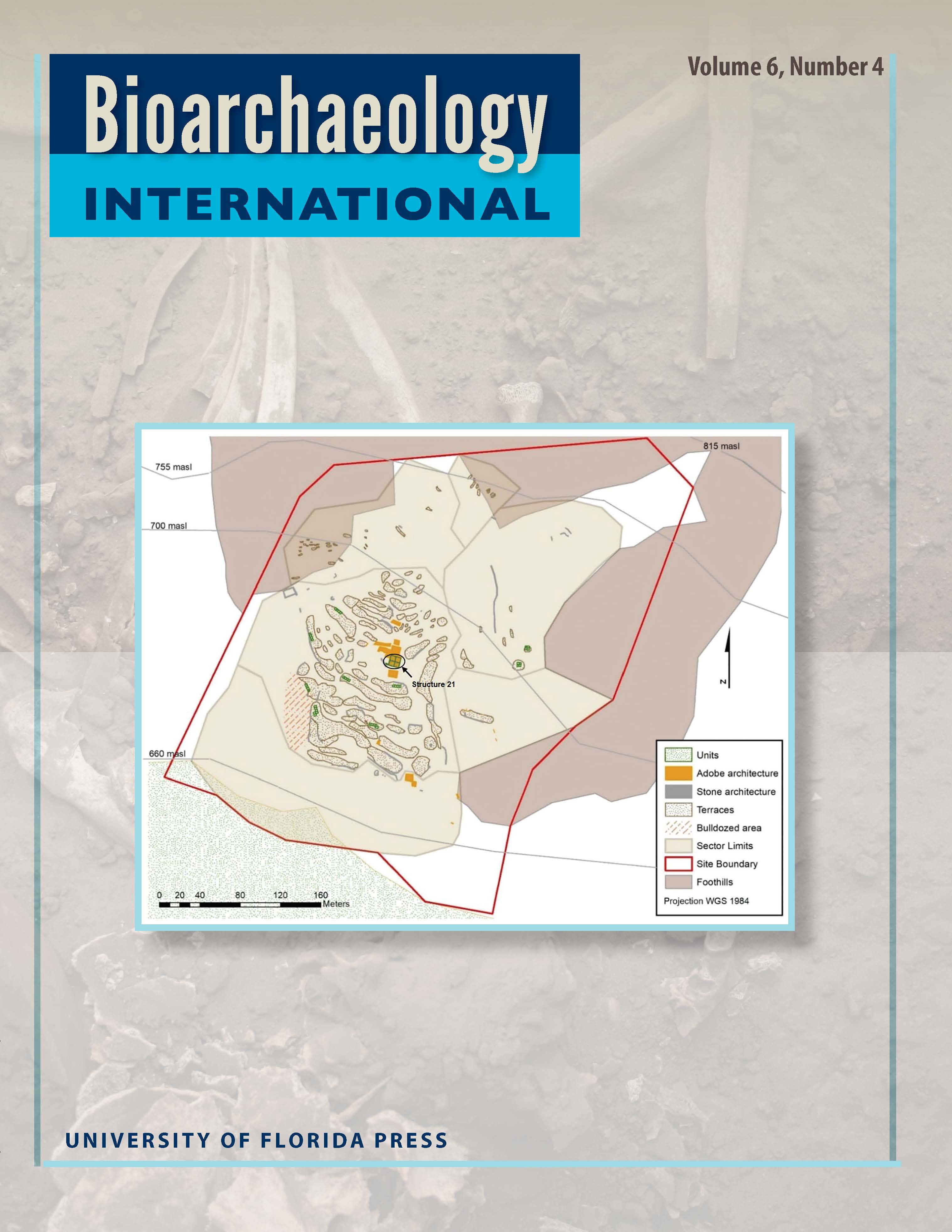The Impact of Clubfoot A Holistic, Paleopathological Case Study from Bronze Age Thailand Using the Bioarchaeology of Care Framework
Main Article Content
Abstract
A detailed study of a young adult male burial from Bronze Age Thailand has revealed a series of significant pathological lesions, which, when contextualized in time and place, allow for insights not only into the life of this young man but also his community. Burial 671, represented by a near complete, well-preserved skeleton and a range of grave goods, was dated to 900–700 B.C. from the northeastern Thailand site of Ban Non Wat. Using the Bioarchaeology of Care Model, a detailed analysis of the lower limb pathological lesions, including a comprehensive review of relevant paleopathological and clinical literature, was undertaken. It is suggested this young man had congenital, bilateral clubfoot, as well as a recent, partially healed femoral midshaft fracture. These pathologies would have impacted his mobility and daily activities, but his skeleton indicates that he developed methods to adjust. Combining this assessment with an evaluation of his socio-environmental context, it is evident that this man, though he died young, was an integrated member of his community.
การศึกษาหลักฐานโครงกระดูกชายหนุ่ม สมัยสำริดในประเทศไทย พบหลักฐานรอยโรคพยาธิสภาพโบราณที่สำคัญ เมื่อพิจารณาถึงบริบทด้านเวลาและสถานที่ทำให้เกิดความเข้าใจเพิ่มขึ้นเกี่ยวกับวิถีชีวิตในอดีตทั้งของบุคคลและชุมชน กรณีศึกษาหลุมฝังพหมายเลข 671 ที่พบโครงกระดูกสภาพเกือบสมบูรณ์ร่วมกับวัตถุอุทิศหลากหลายประเภทจากแหล่งโบราณคดีบ้านโนนวัด ภาคตะวันออกเฉียงเหนือของไทย สมัยสำริด อายุประมาณ 2,900-2,700 ปีมาแล้ว ผลการวิเคราะห์รอยโรคที่พบบริเวณขา เปรียบเทียบกับรายงานผลการศึกษาพยาธิสภาพโบราณและการศึกษาทางคลีนิค ตามกรอบคิดเรื่องการดูแลในงานชีวโบราณคดี พบว่าชายหนุ่มเป็นโรคเท้าปุก หรือมีลักษณะเท้าผิดรูปทั้งสองข้างมาโดยกำเนิด มีรอยโรคที่แสดงถึงการแตกหักของกระดูกต้นขาที่พึ่งหายเป็นปกติ รอยโรคเหล่านี้น่าจะส่งผลกระทบต่อการเคลื่อนไหวและการทำกิจกรรมต่าง ๆ ในชีวิตประจำวัน แต่หลักฐานอื่นที่ปรากฏบนโครงกระดูกก็แสดงถึงพัฒนาการปรับตัวกับโรคดังกล่าวได้ในระดับหนึ่ง ชายหนุ่มคนนี้แม้ปรากฏหลักฐานว่าเสียชีวิตในวัยหนุ่ม แต่ก็ถือเป็นสมาชิกคนหนึ่งของชุมชนเมื่อประเมินร่วมในบริบททางสังคมและสิ่งแวดล้อม

